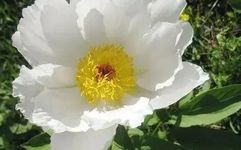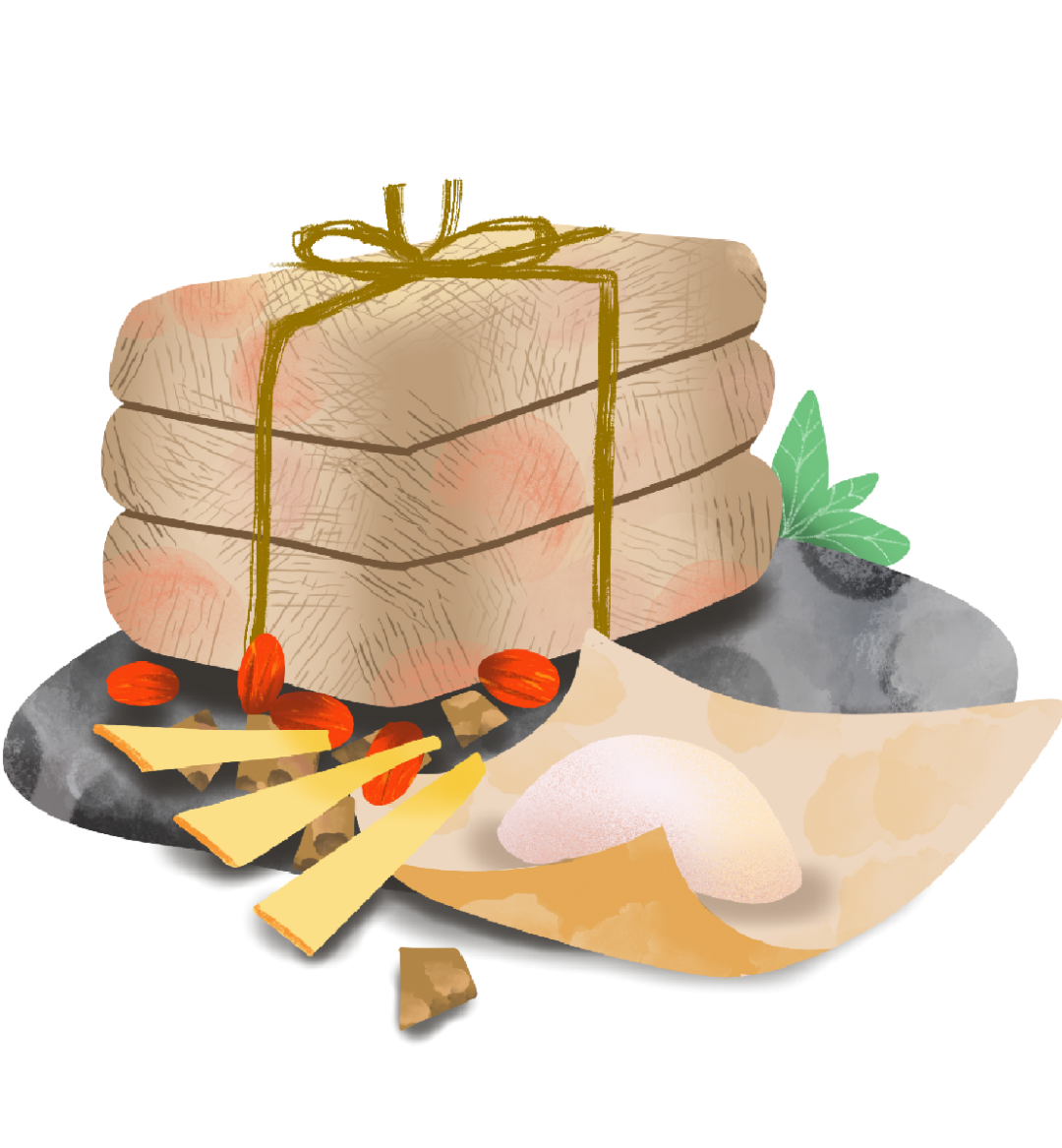
Blood Tonifying Herbs
Blood Tonifying Herbs: These are herbs primarily used to replenish deficiencies and strengthen the body, correcting insufficiencies of Qi, blood, Yin, and Yang. They are commonly used to treat deficiency syndromes and are also known as tonifying or nourishing herbs. Based on their properties, effects, and indications, blood tonifying herbs are generally classified into four categories: Qi tonifying herbs, Yang tonifying herbs, blood tonifying herbs, and Yin tonifying herbs.
Blood Tonifying Herbs: Most of these herbs are sweet, warm, and moist in nature, primarily entering the Heart and Liver meridians. They have the effect of nourishing blood and are indicated for blood deficiency syndromes, which may present as pale or sallow complexion, pale lips and nails, dizziness, tinnitus, palpitations, insomnia, forgetfulness, irregular menstruation, scanty and pale menstrual flow, or even amenorrhea, with a pale tongue and thin pulse. Some also nourish the Liver and Kidneys.
Ancient texts describe beautiful women with the phrase “standing like Bai Shao, sitting like a Peony.” Bai Shao (Paeonia lactiflora) is not only beautiful; its dried flowers can be used as herbal tea, and its rhizome can also be used medicinally. In clinical practice, Bai Shao is frequently used for many women’s health issues.
Bai Shao
bái sháo
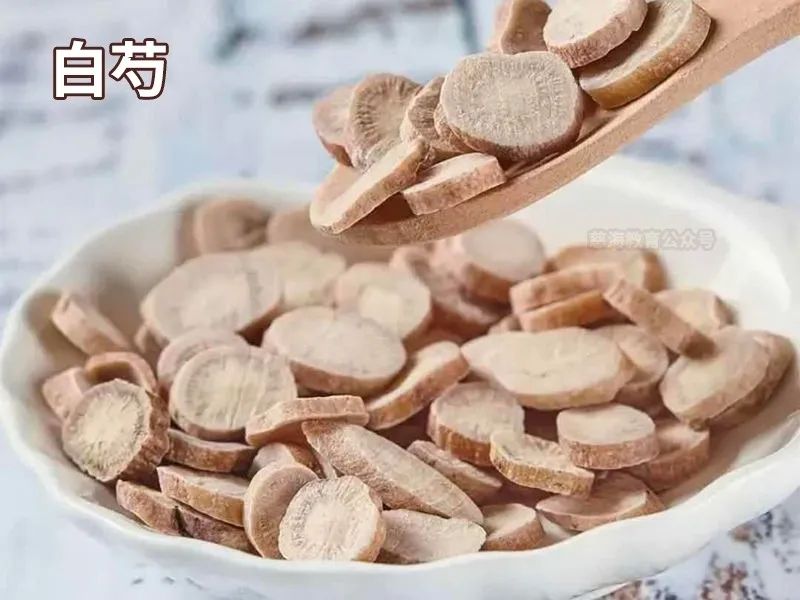
Source:
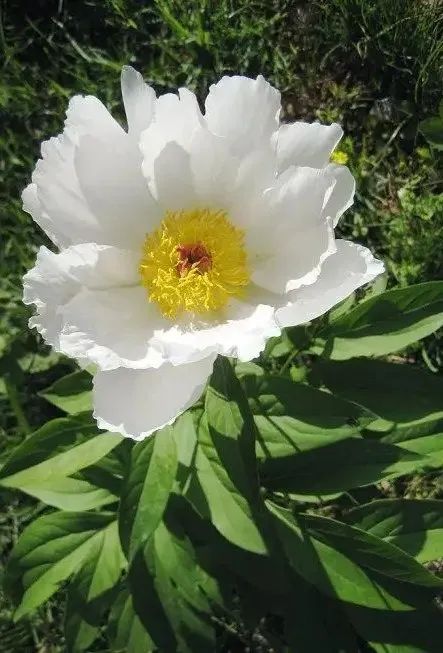
←
Bai Shao
This herb is the dried root of the Ranunculaceae plant, Paeonia lactiflora. It is harvested in summer and autumn, cleaned, and the heads and fine roots are removed. It is boiled in water, the outer skin is removed, or it is peeled and then boiled, and then dried. It is cut into thin slices. This herb has a slight aroma and a slightly bitter, sour taste. The best quality is firm, white, and has a sufficient powdery texture.
Related Names:
Qingyangshen (Plant Name Investigation), Qianniansheng (Yunnan); Naijiangteng (Sichuan); Qingyangshen, Qingyangshen, Baicen (Kunming, Yunnan); Baiqi, Baiyao (Lijiang, Yunnan).
Origin:
It is cultivated across the country, distributed in Heilongjiang, Jilin, Liaoning, Hebei, Henan, Shandong, Shanxi, Shaanxi, Inner Mongolia, etc. The Bai Shao from Zhejiang Pan’an is called “Hang Bai Shao,” while that from Zhongjiang, Sichuan is called “Chuan Bai Shao,” and from Bozhou, Anhui is called “Bo Bai Shao.” The Bai Shao produced in Zhejiang is of the best quality and is one of the “Eight Flavors of Zhejiang.”
Properties and Meridian Entry:
Bitter, sour, slightly cold. Enters the Liver and Spleen meridians.
Functions:
Nourishes blood, regulates menstruation, astringes Yin, stops sweating, softens the Liver, alleviates pain, and pacifies Liver Yang.
Identification of Properties:
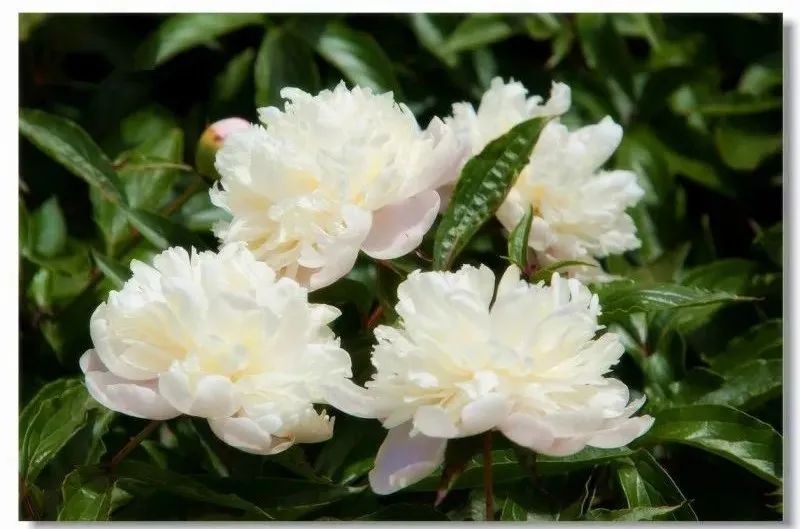
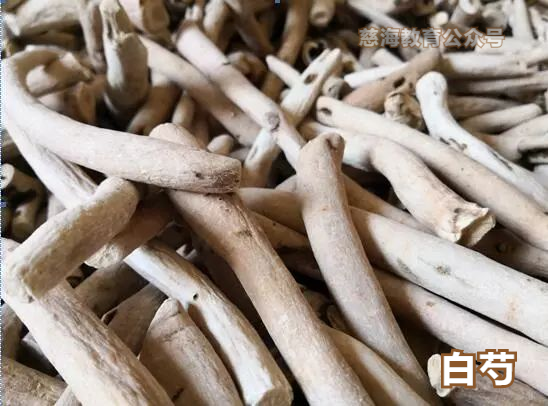
Bai Shao that has been boiled and peeled.
Characteristics of the Medicinal Material:
It is cylindrical, straight or slightly curved, with flat ends, 5-18 cm long and 1-2.5 cm in diameter. The surface is whitish or light brownish-red, smooth or with longitudinal wrinkles and fine root marks, occasionally with remnants of brownish-black outer skin. It is firm, not easily broken, with a relatively flat cross-section, whitish or slightly brownish-red, with visible growth rings and radiating rays. It has a slight aroma and a slightly bitter, sour taste.
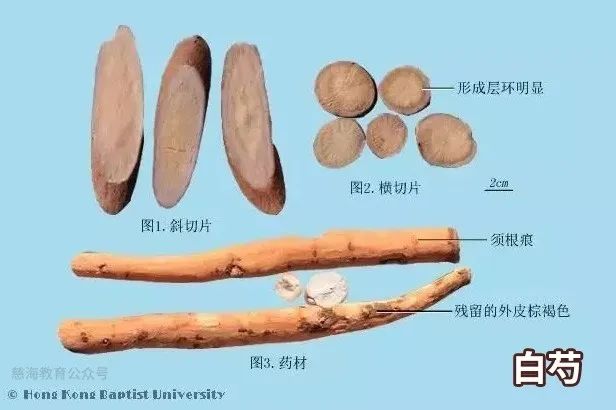
Characteristics of the Slices:
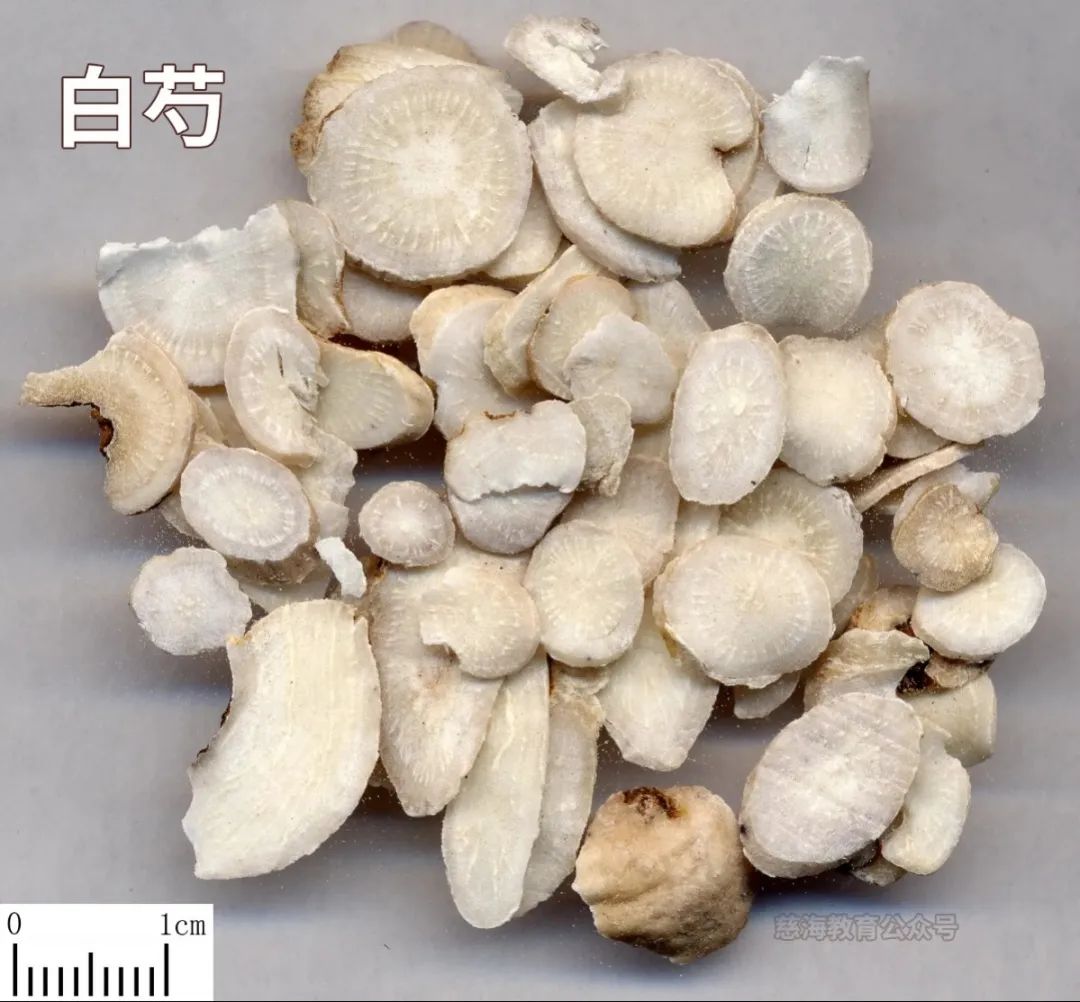
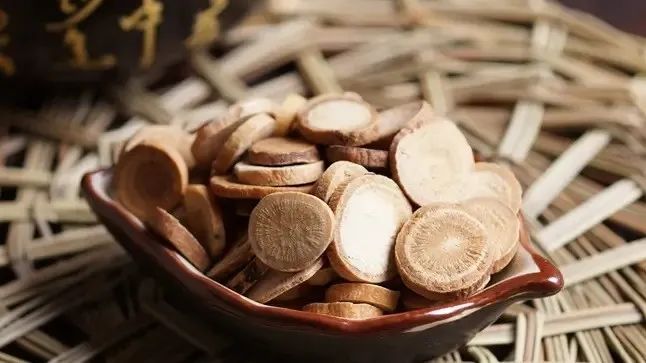
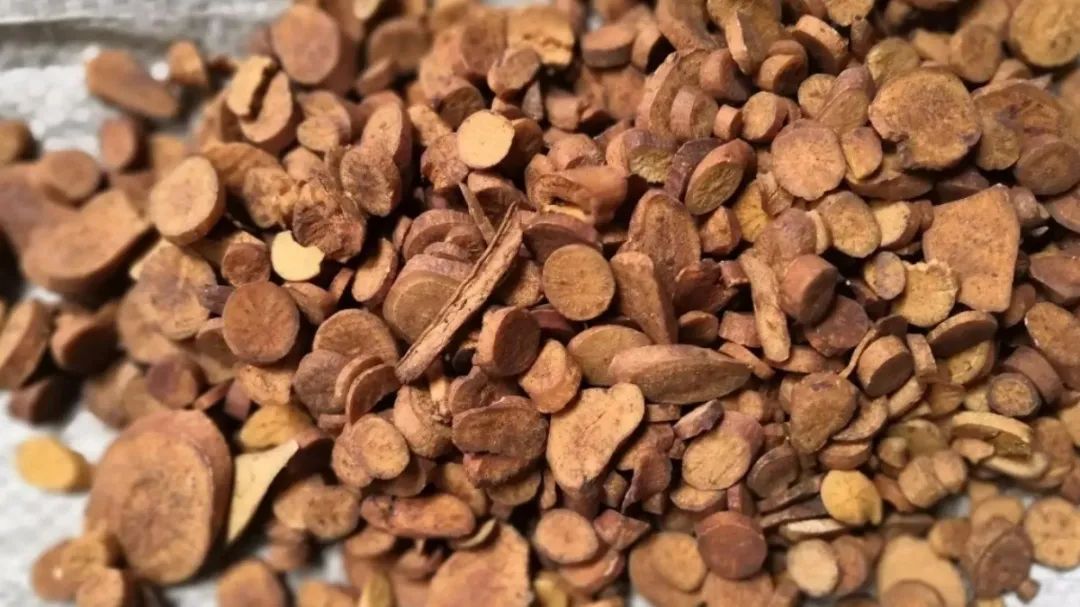
Bai Shao appears as thin, round slices. The surface is light brownish-red or whitish, smooth. The cross-section is whitish or slightly brownish-red, with visible growth rings and slightly raised vein patterns arranged radially. It has a slight aroma and a slightly bitter, sour taste.
Fried Bai Shao resembles Bai Shao slices, with a slightly yellow or light brownish-yellow surface, some may have scorched spots. It has a slight fragrance.
Wine-fried Bai Shao resembles Bai Shao slices, with a slightly yellow or light brownish-yellow surface, some may have scorched spots. It has a slight wine aroma.
Indications:
1. Blood deficiency with sallow complexion, irregular menstruation, and excessive bleeding
This herb has a sour taste and primarily enters the Liver meridian, benefiting the Yin blood of the Liver. It is used to treat blood deficiency presenting as sallow complexion, dizziness, palpitations, or irregular menstruation with abdominal pain, and excessive bleeding. It is often used with Shu Di Huang (Rehmannia), Dang Gui (Angelica), and Chuan Xiong (Ligusticum) in formulas like Si Wu Tang (Four Substance Decoction); if there is blood deficiency with heat and irregular menstruation, it can be combined with Huang Qin (Scutellaria) and Huang Bai (Phellodendron), such as in Bao Yin Jian (Preserving Yin Decoction); if there is excessive bleeding, it can be used with E Jiao (Colla Corii Asini) and Ai Ye (Artemisia) to nourish blood and stop bleeding.
2. Spontaneous sweating and night sweats
This herb has the function of astringing Yin and stopping sweating. If sweating is due to external wind-cold and disharmony of Ying and Wei, it can be combined with Gui Zhi (Cinnamon Twig) to harmonize Ying and Wei, as in Gui Zhi Tang (Cinnamon Twig Decoction); for spontaneous sweating due to deficiency, it is often combined with Huang Qi (Astragalus) and Bai Zhu (Atractylodes); for night sweats due to Yin deficiency, it can be used with Long Gu (Dragon Bone), Mu Li (Oyster Shell), and Fu Xiao Mai (Triticum) together.
3. Pain in the hypochondrium and abdomen, and limb cramps
This herb astringes the Liver Yin, nourishes blood, softens the Liver, and alleviates pain, treating blood deficiency and Liver Qi stagnation with hypochondriac pain, often combined with Dang Gui and Chai Hu (Bupleurum) in formulas like Xiao Yao San (Free and Easy Wanderer Powder); it can also regulate the Liver and Spleen, soften the Liver, and treat abdominal pain and diarrhea due to Spleen deficiency with combinations of Bai Zhu, Fang Feng (Siler), and Chen Pi (Aged Tangerine Peel), as in Tong Xie Yao Fang (Important Formula for Diarrhea); for treating dysentery with abdominal pain, it can be combined with Mu Xiang (Aucklandia) and Huang Lian (Coptis) to clear heat and dry dampness, as in Shao Yao Tang (Peony Decoction); for treating cramps and pain in the limbs due to deficiency of Yin blood, it is often combined with Gan Cao (Licorice) to alleviate pain, as in Shao Yao Gan Cao Tang (Peony and Licorice Decoction).
4. Liver Yang rising, headache, and dizziness
This herb nourishes blood, astringes Yin, and pacifies Liver Yang, commonly used for treating Liver Yang rising, often combined with Niu Xi (Achyranthes) and Dai Zhe Shi (Hematite), as in Zhen Gan Xi Feng Tang (Calming the Liver and Extinguishing Wind Decoction) and Jian Ling Tang (Building the Spirit Decoction).
Dosage:
Decocted, 6-15g. For pacifying Liver Yang and astringing Yin to stop sweating, it is often used raw; for nourishing blood, regulating menstruation, and softening the Liver to alleviate pain, it is often fried or wine-fried.
Precautions:
Should not be used with Li Lu (Veratrum) and is not suitable for use in cases of Yang deficiency and cold.
Distinguishing from Other Herbs:
Distinguishing Bai Shao from Chi Shao 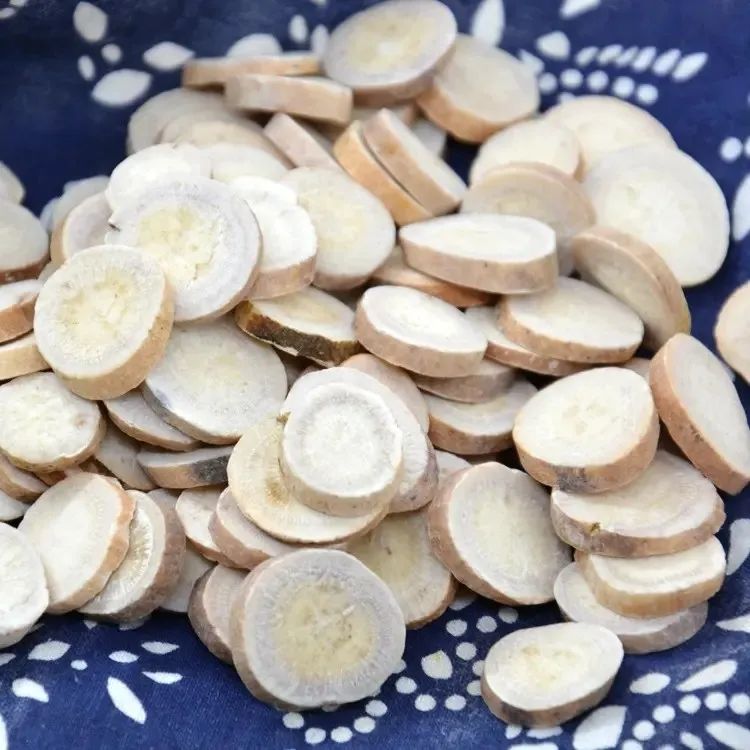
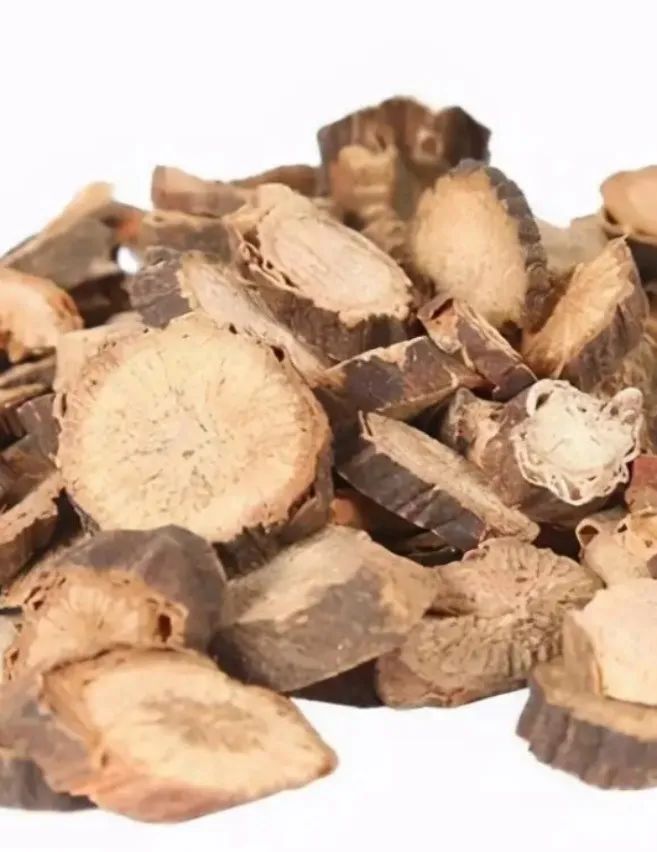
Bai Shao and Chi Shao were not differentiated in the “Shen Nong’s Materia Medica,” both referred to as Shao Yao. It was not until the late Tang and early Song dynasties that the two were distinguished. Both have a slightly cold nature, but the ancients said, “Bai supplements, Chi disperses; Bai collects, Chi scatters,” succinctly summarizing their main differences.
Generally, it is believed that, in terms of efficacy, Bai Shao excels in nourishing blood, regulating menstruation, astringing Yin, and pacifying Liver Yang; while Chi Shao excels in clearing heat, cooling blood, invigorating blood, and dispelling stasis. In terms of application, Bai Shao is indicated for Yin blood deficiency and excess Liver Yang; Chi Shao is indicated for heat in the blood, blood stasis, and conditions caused by Liver fire. Both Bai Shao and Chi Shao can alleviate pain, but Bai Shao is better at nourishing blood and softening the Liver, alleviating pain due to insufficient Liver Yin, blood deficiency, and excess Liver Qi, while Chi Shao is better at invigorating blood and dispelling stasis, suitable for pain due to blood stasis, especially when there is heat in the blood.
Modern Research:
1. Chemical Composition: It mainly contains monoterpenoid components: paeoniflorin, oxypaeoniflorin, benzoylpaeoniflorin, baishao glycoside, paeoniflorin ketone, gallic acid, and paeonol; sterol components: β-sitosterol; tannin components: 1,2,3,6-tetra-galloyl glucose, gallic acid, and catechin; phenolic components: paeonol. The “Chinese Pharmacopoeia” stipulates that this herb must contain no less than 1.6% paeoniflorin and no less than 1.2% in slices.
2. Pharmacological Effects: The total saponins of this herb have protective effects against kidney damage, liver damage, and cerebral ischemia. The decoction has sedative, antidepressant, and gastrointestinal regulatory effects, and both the decoction and total saponins have immune-regulating and anti-inflammatory effects. The decoction has significant analgesic effects on acetic acid-induced writhing, and paeoniflorin has good antispasmodic effects.
Related Discussions:
1. “Ben Cao” states: “It is effective against abdominal pain due to evil Qi, removes blood stasis, breaks up masses, treats cold and heat hernias, stops pain, benefits urination, and boosts Qi.”
2. “Bie Lu” states: “It smooths blood circulation, alleviates pain, disperses evil blood, expels stagnant blood, removes water Qi, benefits the bladder, large and small intestines, and resolves abscesses, treating seasonal cold and heat, and abdominal pain due to evil Qi.”
3. “Ri Hua Zi Ben Cao” states: “It treats wind and supplements tuberculosis, is effective for all women’s diseases, and for diseases before and after childbirth, regulates menstruation, reduces fever and restlessness, boosts Qi, treats epidemic heat diseases, and calms mania, as well as for blood circulation issues, intestinal wind, bleeding, hemorrhoids, and skin sores, headaches, brightens vision, and treats red eyes and pterygium.”
Further Reading:
In addition to being a common herb for gynecological diseases, Bai Shao is also an excellent blood tonifying herb. The famous formula “Si Wu Tang” combines Bai Shao with Shu Di Huang, Dang Gui, and Chuan Xiong to create a key formula for nourishing blood, used to treat blood deficiency syndromes, applicable for both cold and heat conditions.
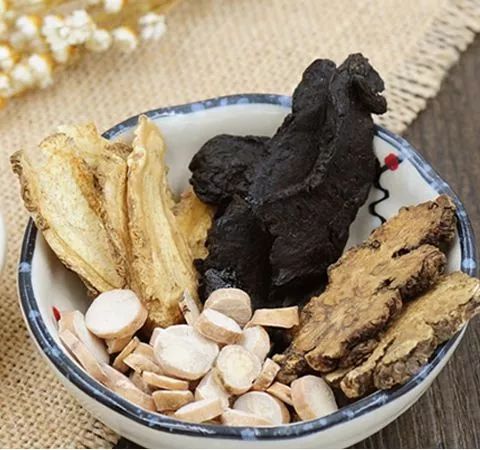
Note: The content and images are sourced from textbooks and the internet for educational purposes only. All formulas, herbs, and treatment methods mentioned are for reference and should not be used by non-professionals.

